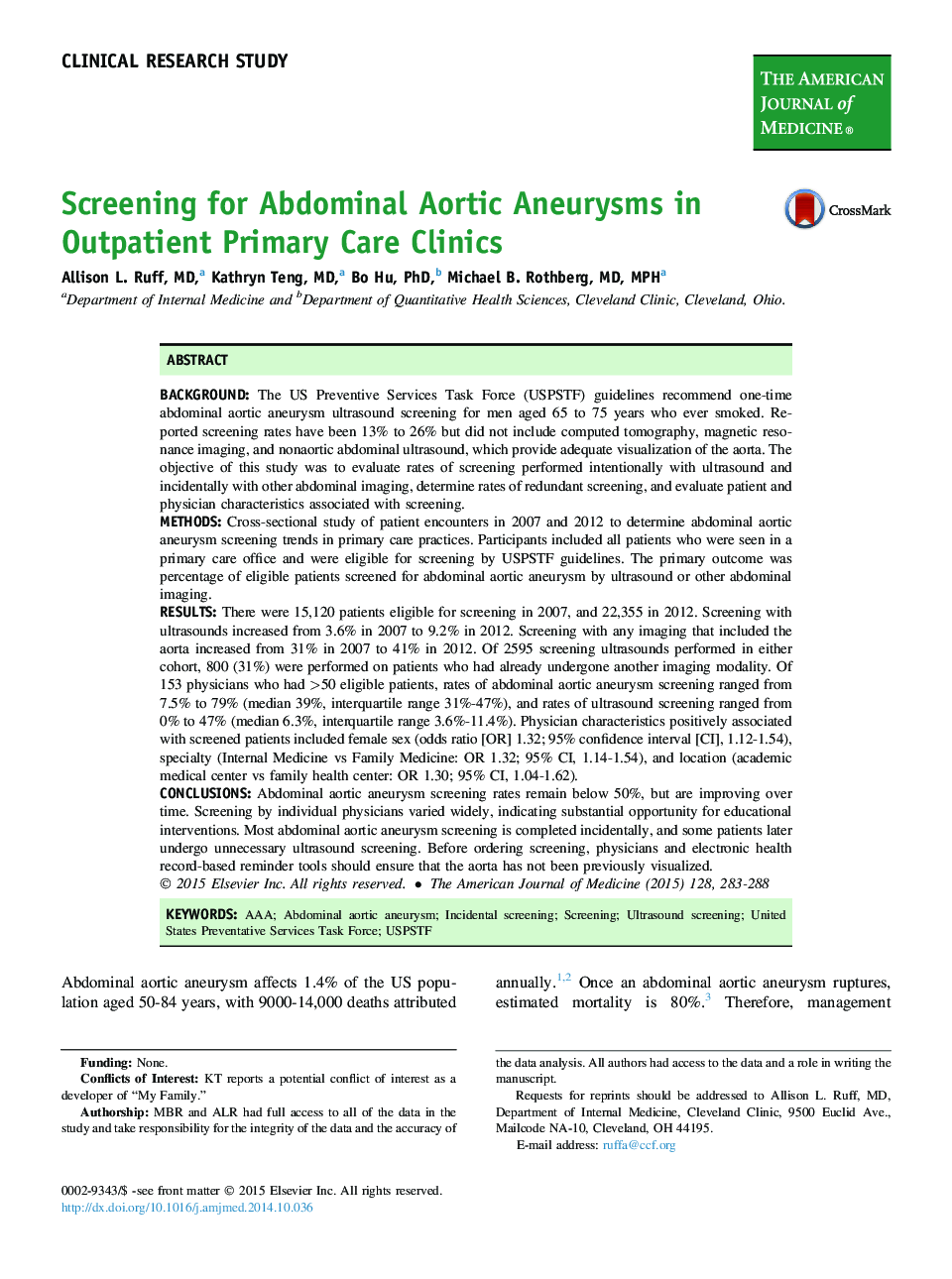| کد مقاله | کد نشریه | سال انتشار | مقاله انگلیسی | نسخه تمام متن |
|---|---|---|---|---|
| 2718557 | 1566126 | 2015 | 6 صفحه PDF | دانلود رایگان |
BackgroundThe US Preventive Services Task Force (USPSTF) guidelines recommend one-time abdominal aortic aneurysm ultrasound screening for men aged 65 to 75 years who ever smoked. Reported screening rates have been 13% to 26% but did not include computed tomography, magnetic resonance imaging, and nonaortic abdominal ultrasound, which provide adequate visualization of the aorta. The objective of this study was to evaluate rates of screening performed intentionally with ultrasound and incidentally with other abdominal imaging, determine rates of redundant screening, and evaluate patient and physician characteristics associated with screening.MethodsCross-sectional study of patient encounters in 2007 and 2012 to determine abdominal aortic aneurysm screening trends in primary care practices. Participants included all patients who were seen in a primary care office and were eligible for screening by USPSTF guidelines. The primary outcome was percentage of eligible patients screened for abdominal aortic aneurysm by ultrasound or other abdominal imaging.ResultsThere were 15,120 patients eligible for screening in 2007, and 22,355 in 2012. Screening with ultrasounds increased from 3.6% in 2007 to 9.2% in 2012. Screening with any imaging that included the aorta increased from 31% in 2007 to 41% in 2012. Of 2595 screening ultrasounds performed in either cohort, 800 (31%) were performed on patients who had already undergone another imaging modality. Of 153 physicians who had >50 eligible patients, rates of abdominal aortic aneurysm screening ranged from 7.5% to 79% (median 39%, interquartile range 31%-47%), and rates of ultrasound screening ranged from 0% to 47% (median 6.3%, interquartile range 3.6%-11.4%). Physician characteristics positively associated with screened patients included female sex (odds ratio [OR] 1.32; 95% confidence interval [CI], 1.12-1.54), specialty (Internal Medicine vs Family Medicine: OR 1.32; 95% CI, 1.14-1.54), and location (academic medical center vs family health center: OR 1.30; 95% CI, 1.04-1.62).ConclusionsAbdominal aortic aneurysm screening rates remain below 50%, but are improving over time. Screening by individual physicians varied widely, indicating substantial opportunity for educational interventions. Most abdominal aortic aneurysm screening is completed incidentally, and some patients later undergo unnecessary ultrasound screening. Before ordering screening, physicians and electronic health record-based reminder tools should ensure that the aorta has not been previously visualized.
Journal: The American Journal of Medicine - Volume 128, Issue 3, March 2015, Pages 283–288
